
Scene from USF 2019 Production of Hamlet
- Subject:
- Arts and Humanities
- Literature
- Theater
- Material Type:
- Teaching/Learning Strategy
- Provider:
- Reimagine Teaching
- Provider Set:
- Utah Shakespeare Festival
- Date Added:
- 12/08/2020

Scene from USF 2019 Production of Hamlet

Scene from USF 2019 Production of Hamlet

Scene from USF 2019 Production of Hamlet

Lesson on Approaching Hamlet for English and Theatre Educators

Lesson on Approaching Hamlet for English and Theatre Educators

Lesson on Approaching Hamlet for English and Theatre Educators

This lesson is designed for teachers who would like to use one general lesson to teach several aspects of Internet safety. The subjects of cyber-bullying, cell phone safety and Internet safety are stressed.
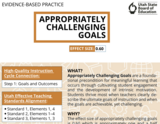
Appropriately Challenging Goals are a foundational precondition for meaningful learning that occurs through cultivating student engagement and the development of intrinsic motivation. Students thrive most when teachers clearly describe the ultimate goals of instruction and when the goals are achievable, yet challenging.

An interactive graph to show presidential approval ratings over time and in comparison to other presidents. An updating calculation of the president's approval rating, accounting for each poll's recency, sample size, methodology and house effects.
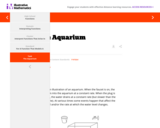
The purpose of this task is to connect graphs with real life situations. Graphs tell a story. Specific features of a graph connect to specific features of a story. A point on a graph captures a specific instant in the story.
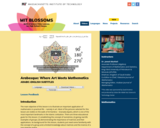
The main objective of this lesson is to illustrate an important application of mathematics in practical life -- namely in art. Most of the pictures selected for this lesson are visible on the walls of Al-Hambra – Granada (Spain), which is one of the most important landmarks in the Islamic civilization. There are three educational goals for this lesson: (1) establishing the concept of isometries; (2) giving real-life examples of groups; (3) demonstrating the importance of matrices and their applications. As background for this lesson, students just need some familiarity with the concept of a group and a limited knowledge about matrices and the inverse of a non-singular matrix.
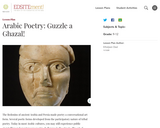
The Bedouins of ancient Arabia and Persia made poetry a conversational art form. Several poetic forms developed from the participatory nature of tribal poetry. Today in most Arabic cultures, you may still experience public storytelling and spontaneous poetry challenges in the streets. The art of turning a rhyme into sly verbal sparring is considered a mark of intelligence and a badge of honor. Students will learn about the origins and structure of Arabic Poetry.
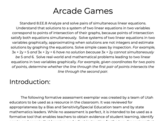
Arcade Games: Standard 8.EE.8 Analyze and solve pairs of simultaneous linear equations. Understand that solutions to a system of two linear equations in two variables correspond to points of intersection of their graphs, because points of intersection satisfy both equations simultaneously. Solve systems of two linear equations in two variables graphically, approximating when solutions are not integers and estimate solutions by graphing the equations. Solve simple cases by inspection. For example, 3x + 2y = 5 and 3x + 2y = 6 have no solution because 3x + 2y cannot simultaneously be 5 and 6. Solve real-world and mathematical problems leading to two linear equations in two variables graphically. For example, given coordinates for two pairs of points, determine whether the line through the first pair of points intersects the line through the second pair.
This formative assessment exemplar was created by a team of Utah educators to be used as a resource in the classroom. It was reviewed for appropriateness by a Bias and Sensitivity/Special Education team and by state mathematics leaders. While no assessment is perfect, it is intended to be used as a formative tool that enables teachers to obtain evidence of student learning, identify assets and gaps in that learning, and adjust instruction for the two dimensions that are important for mathematical learning experiences (i.e., Standards for Mathematical Practice, Major Work of the Grade).

This video segment adapted from Building Big illustrates the strength of the arch in bridge design and construction.
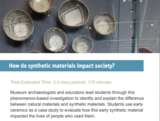
Museum archaeologists and educators lead students through this phenomenon-based investigation to identify and explain the difference between natural materials and synthetic materials. Students use early ceramics as a case study to evaluate how this early synthetic material impacted the lives of people who used them.
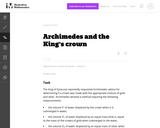
The famous story of Archimedes running through the streets of Syracuse (in Sicily during the third century bc) shouting ''Eureka!!!'' (I have found it) reportedly occurred after he solved this problem. The problem combines the ideas of ratio and proportion within the context of density of matter.
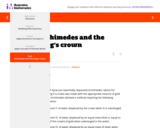
This problem combines the ideas of ratio and proportion within the context of density of matter.

At first glance, Katena might look like an ordinary inflatable with an unusually complex and oversized structure. But when they walk inside, visitors soon realize this is an entirely different experience. They enter a world apart, a world of interconnecting tunnels and domes saturated with light and color, called a luminarium. This video will take your students on a virtual tour of one luminarium that was featured at the Cincinnati BLINK festival. They will learn how the design team of Architects of Air blends geometry, art, and architecture to create a pneumatic, or air-filled, structure in which form must follow function.

P‡gina 10 of Escribiendo Obras Con Los J—venes de Julie Jensen le’do por Isabella Reeder

P‡gina 11 of Escribiendo Obras Con Los J—venes de Julie Jensen le’do por Isabella Reeder